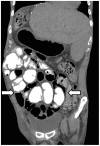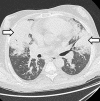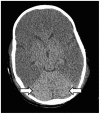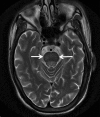Imaging panorama in postoperative complications after liver transplantation
- PMID: 26534929
- PMCID: PMC4863188
- DOI: 10.1093/gastro/gov057
Imaging panorama in postoperative complications after liver transplantation
Abstract
The liver is the second most-often transplanted solid organ after the kidney, so it is clear that liver disease is a common and serious problem around the globe. With the advancements in surgical, oncological and imaging techniques, orthotopic liver transplantation has become the first-line treatment for many patients with end-stage liver disease. Ultrasound, and Doppler are the most economical and cost-effective imaging modalities for evaluating postoperative fluid collections and vascular complications. Computed tomography (CT) is used to confirm the findings of ultrasound and look for pulmonary complications. Magnetic resonance imaging (MRI) is used for the diagnosis of biliary complications, bile leaks and neurological complications. This article illustrates the imaging options for diagnosing the various complications that can be encountered in the postoperative period after liver transplantation.
Keywords: imaging; liver transplant; postoperative complications.
© The Author(s) 2015. Published by Oxford University Press and the Digestive Science Publishing Co. Limited.
Figures













References
-
- Davis GL, Alter MJ, El-Serag H, et al. Aging of hepatitis C virus (HCV)-infected persons in the United States: a multiple cohort model of HCV prevalence and disease progression. Gastroenterology 2010;138:513–21. - PubMed
-
- Ammori JB, Pelletier SJ, Lynch R, et al. Incremental costs of post-liver transplantation complications. J Am Coll Surg 2008;206:89–95. - PubMed
-
- Crossin JD, Muradali D, Wilson SR. US of liver transplants: normal and abnormal. Radiographics 2003;23:1093–114. - PubMed
Publication types
LinkOut - more resources
Full Text Sources
Other Literature Sources

